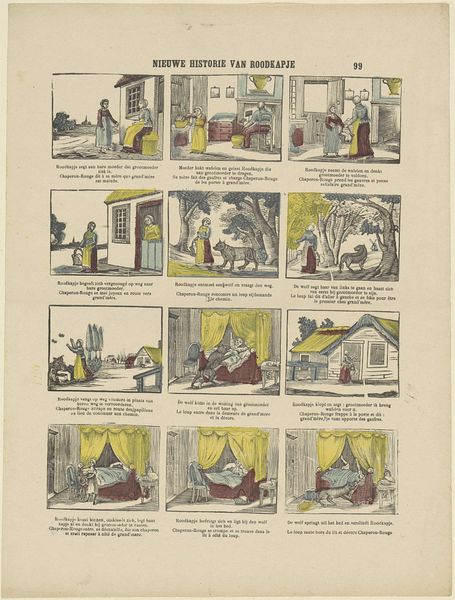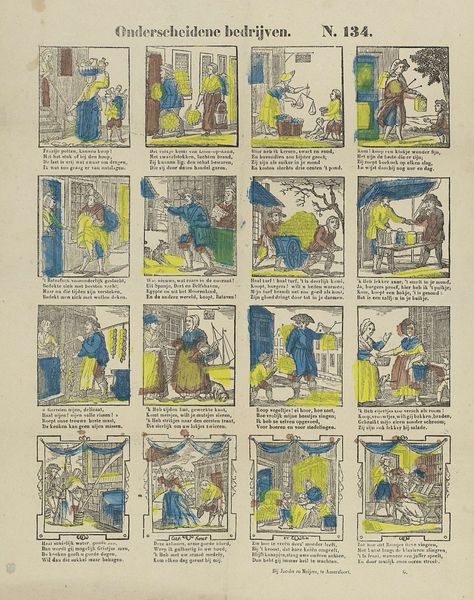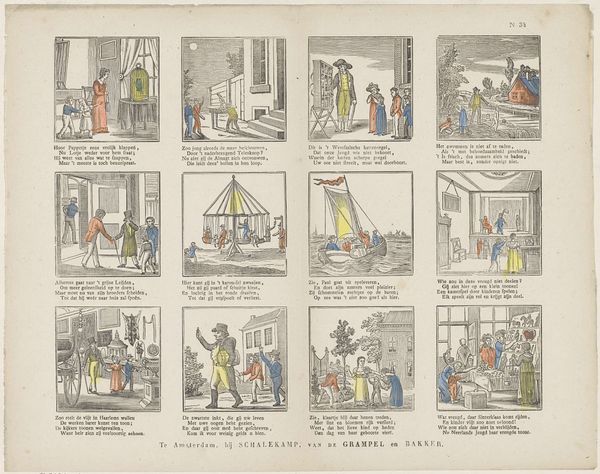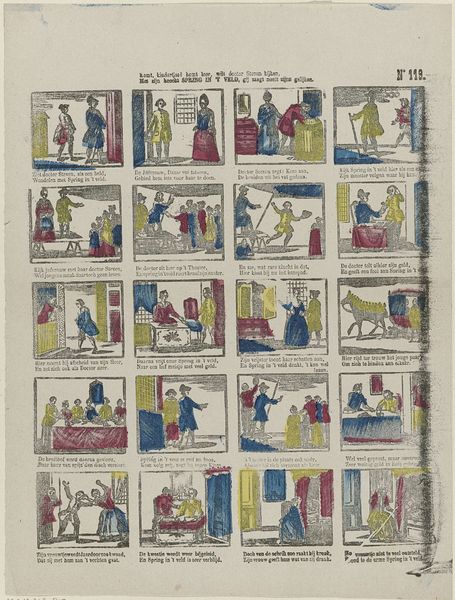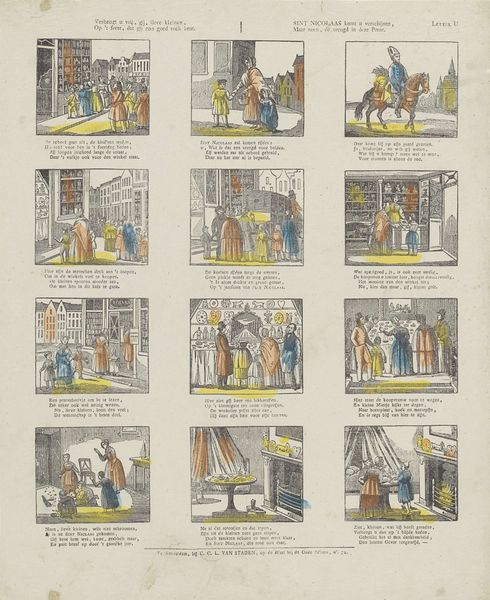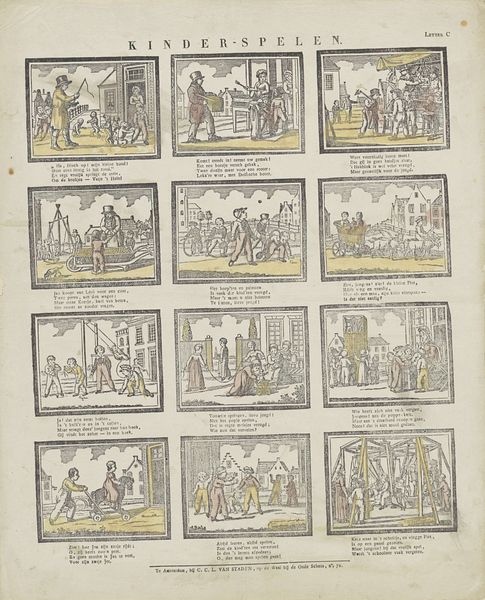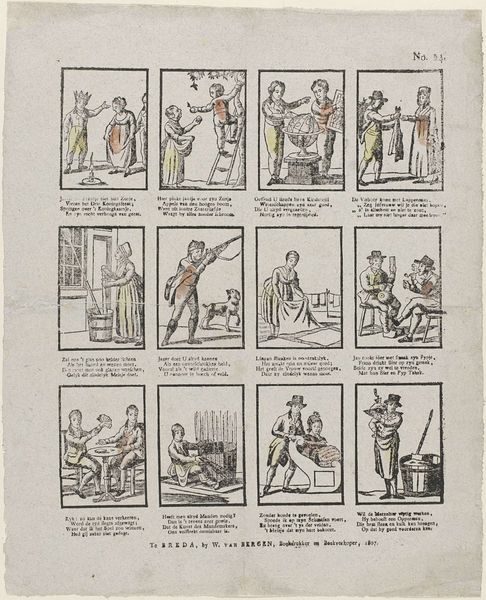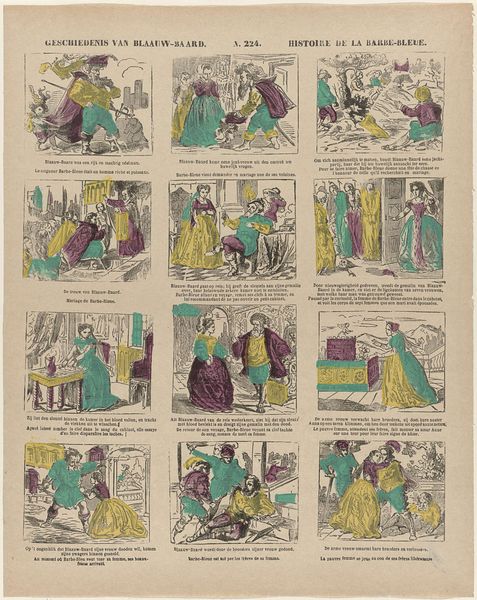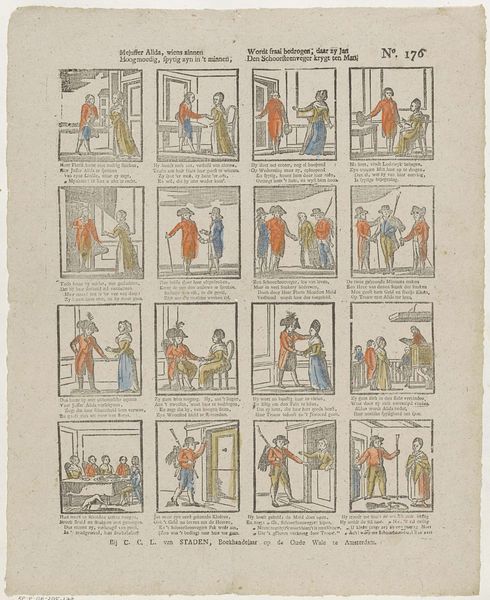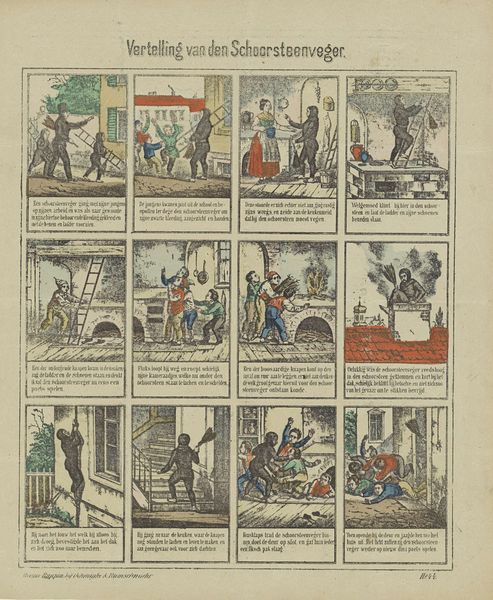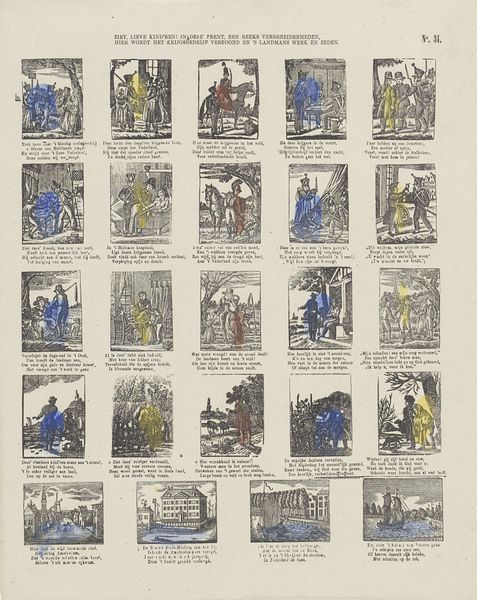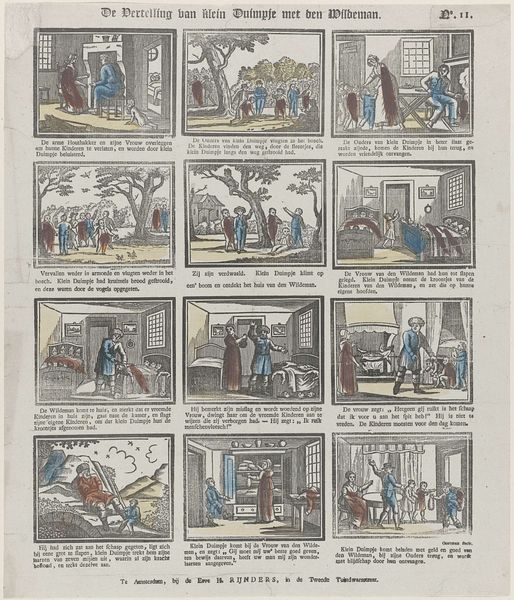
Komt nu, lieve meisjes, gij bloempjes der jeugd, / Ik hoop dat deez' prent u een weinig verheugd. / Is dit zoo ik roep met Van Alphen dan meê, / Geef eerst tot belooning een kusje of twee 1850 - 1870
0:00
0:00
graphic-art, print, engraving
#
graphic-art
#
narrative-art
# print
#
genre-painting
#
engraving
Dimensions: height 370 mm, width 294 mm
Copyright: Rijks Museum: Open Domain
Curator: Editor: Here we have a piece titled "Komt nu, lieve meisjes, gij bloempjes der jeugd…" by P.C.L. van Staden & Co., dating from 1850 to 1870. It’s a printed engraving. The overall composition is really interesting, almost like a comic strip from that time. What jumps out to me is how it seems to portray various aspects of young women's lives. What do you make of it? Curator: This print immediately makes me consider the means of its production and distribution. Engravings were a popular form of visual communication during this period, making art accessible to a wider audience. Instead of focusing solely on artistic genius, what does it tell us about the labor and industrial processes involved? The availability of such prints also says a great deal about Victorian leisure and consumer culture, don't you think? Editor: Definitely, seeing it as mass-produced shifts my perspective. It feels less like a unique artwork and more like a commodity. What about the themes it presents, are those also shaped by these production processes? Curator: Precisely. The presentation of these women, within what appears to be very staged situations, must be seen within the socio-economic framework that enabled its creation. Each vignette likely served as a form of moral or behavioral instruction; observe the dress, actions, environments, all dictated by the societal expectations. Editor: So, it's not just an aesthetic object, but a piece of material culture, reflecting and reinforcing norms through its very existence as a widely available print. Curator: Exactly. We might further explore the role of printmakers, publishers like P.C.L. van Staden, and the intended consumer base. These were essential in shaping artistic creation and the narrative, and even defining the artwork itself. Editor: That really emphasizes the importance of thinking about how art is made and circulated, not just what it depicts. Thanks! Curator: My pleasure! By analyzing materials and the conditions of artistic production, we can better appreciate the true depth of these works.
Comments
No comments
Be the first to comment and join the conversation on the ultimate creative platform.
